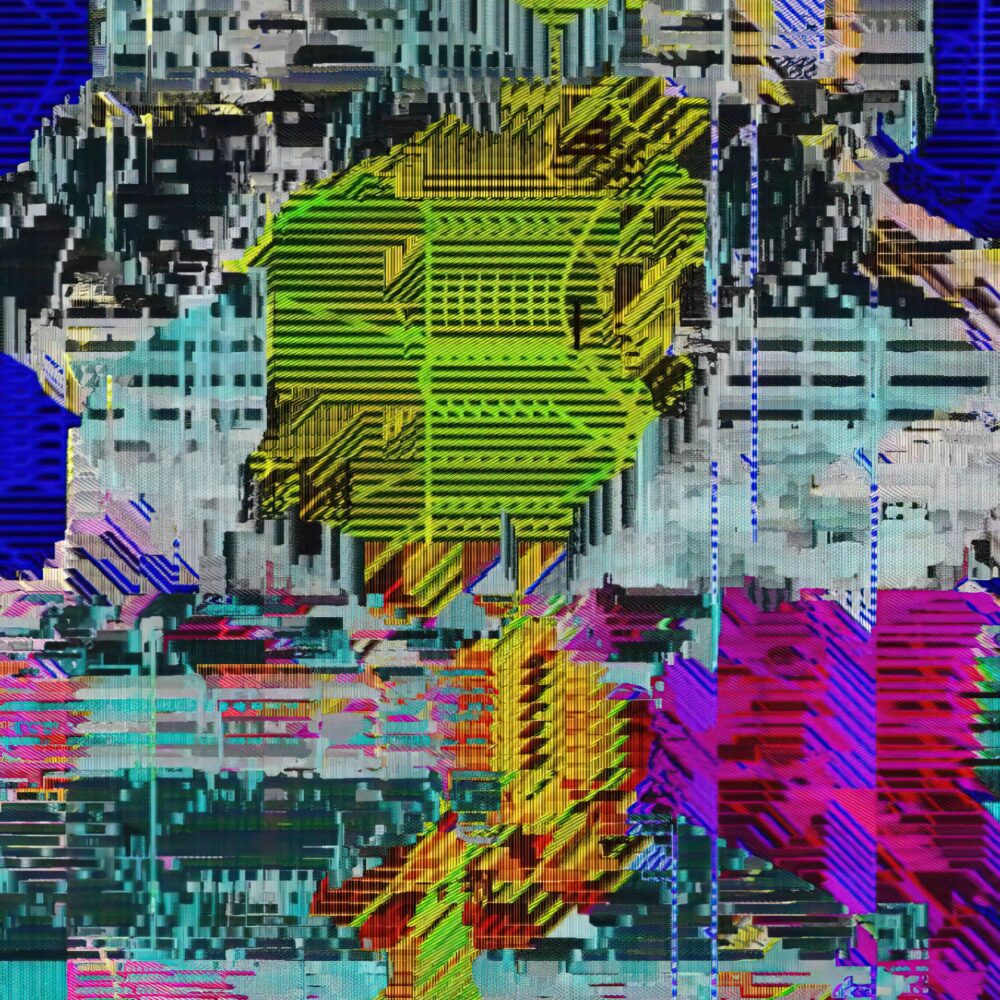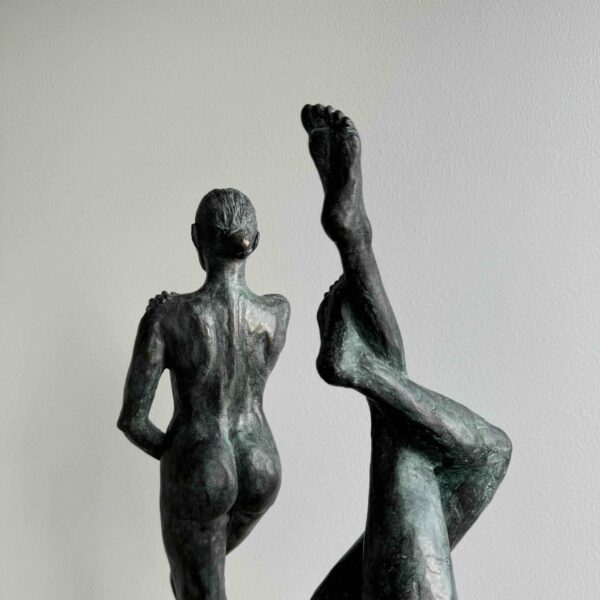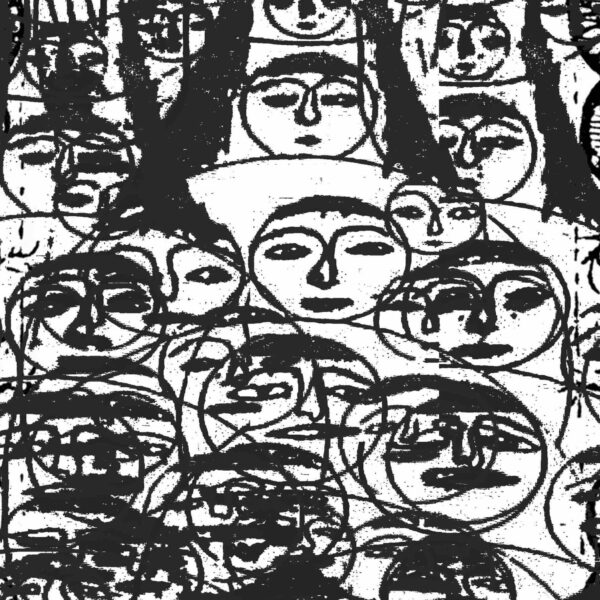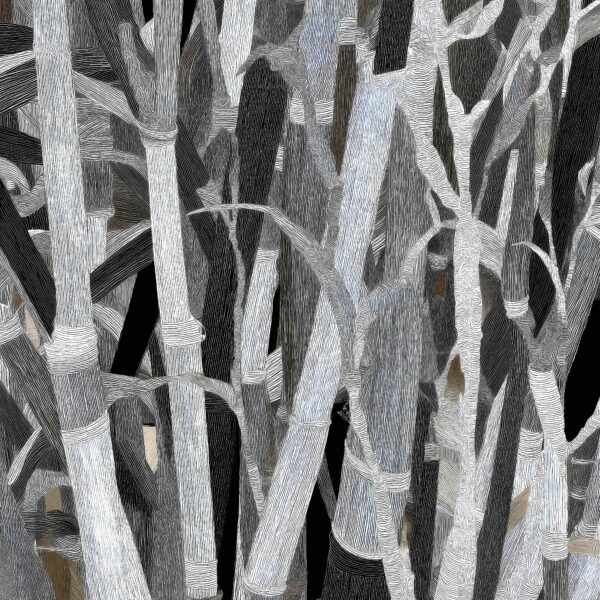Ix Shells on Human Connection
In this article, we sit down with Ix Shells, the innovative artist whose work bridges technology, music, and human emotion through generative art. She shares her journey from technical support to acclaimed digital artist, reflecting on her creative process, finding balance between digital immersion and physical connection, and her recent collaboration with the SMK museum in Copenhagen. This article is edited for brevity and clarity.

AOTM: Can you tell us about your earliest memories creating art?
Ix Shells: When I was a kid, I was more into what my dad did—he was an engineer who loved experimenting with new hobbies, like playing instruments or gardening on our family’s farm. I wasn’t really into arts; I was more focused on how things work. My first jobs were in technical support, and I initially wanted to study architecture but switched to computer science to understand art better. During a tough time with my family and partner in Toronto, I found refuge in experimenting with glitch art, using photos I took as a creative outlet.
AOTM: Can you tell us about some of your early pieces and the inspiration behind them? This will help those less familiar with your work to understand its evolution.
Ix Shells: Some of my first pieces were what I’d call data mushing or data bending. I used Notepad++ to edit photos and videos I took while living in Toronto, glitching them to create cyber-like or futuristic figures inspired by sci-fi stories. It was like seeing underground cities and patterns take form randomly. I nurtured my imagination by layering programs that kept evolving. I still use many of those same algorithms today, like in my pieces “Casco Viejo” or “Beyond Recognition,” which highlights the beauty of generative art—how the same program can produce unique and varied outputs.
AOTM: How did your initial interest in architecture has influenced your work, especially in creating digital spaces and structures?
Ix Shells: Of course. I think of architecture and programming as extensions of the way we think as humans. For example, I spend a lot of time communicating in Spanish, my native language, with those close to me here in my country. Over the years, I’ve noticed how my English has evolved, but it still takes me longer to express my thoughts in another language. This is similar to how programming and architecture work—they extend the way we think and observe the world around us, from shapes to concepts. It’s fascinating to see how people can think so differently or, at times, follow similar patterns, almost like they’re following a certain program.
AOTM: What are some messages that you would want to tell a younger version of yourself?
Ix Shells: First of all, I’d give them a computer and ensure they have access to the education I didn’t have growing up. Maybe if I had started learning computer science earlier, I would’ve already created that app. I’d also give them a hug and tell them everything will be okay. If I could go back, I would write more about my thoughts and the world around me because I’m starting to understand how this is also a way of creating art and leaving behind learning memories—not just visual, but also letting people imagine what goes through your mind through words.
Those three things would help me express more through other mediums from the start. I’ve been taking breaks between creating visual art and writing about it. Sometimes I create a lot of art without giving it a title or description. Then, years later, I find the artwork in my folders and think, “This means something to me now, and it can tell a story this way.” I try to keep my work genuine—I can’t just come up with something that I don’t really feel and put it out there. It wouldn’t feel like it even belongs to me.
AOTM:Are there any individual pieces that you feel were pivotal in your career?
Ix Shells: As I mentioned, some of my artworks don’t even have titles. But most of the things I’ve shared on my Instagram have a story to tell about the time I was living. For example, I used to create visuals with music from Nils Frahm, a pianist who uses synthesizers and experimental sounds. I have many works inspired by his music. Whenever I need to focus or relax, I play his ambient experimental music. These works are very close to me. There’s one called Switching Time Zones that I haven’t been able to recreate, and it always amazes me how I came up with it.
The patterns in this piece were all created from music playing in the background. That’s what I love about mixing music with generative art—you can see the music take shape in the artwork. It’s almost like dancing with patterns. There’s an artwork I made in Toronto, which is sort of a collage. You can see the City of Toronto in the background with birds in murmuration. The music influences the movement while everything else is still, as it’s a photo with a video in the background. This was one of the first algorithms I explored—displacing lines to create different shapes that resemble birds but are actually patterns created by the music. These kinds of artworks make me feel that everything is connected—nature, music, and the randomness of algorithms. They mimic the movement of birds, the ocean, or the wind.
I used to switch between very relaxing videos and glitchy, erratic ones because I didn’t want to stay in the same mood all the time. I wanted to switch moods and shake off the excess information I’d accumulate after spending 16 hours or more in front of a screen. I think many artists will understand this.
AOTM: It’s the dedication, the quiet time—the parts of the process that people don’t see.
Ix Shells: It’s how we program ourselves. I recently moved in with my partner, my girlfriend, who’s studying architecture. That’s how we connected in the beginning. I’ve seen her growth—from spending no time on the computer to now spending 10 hours straight. She didn’t sleep last night, finishing her floor plans. She’s in finals right now, and it’s a reflection of how I am with my work. The more time you spend with these tools, which are just extensions of ourselves, the more connected you become to them. Even though our bodies aren’t designed to handle this much information or time online, we somehow sync with what we use. It’s hard to stop when you’re so in sync with something you love, but it’s also important to remember that we’re human and need to take it easy.
AOTM: How do you balance inspiration, experimentation, and production? What does a typical day in your creative process look like?
Ix Shells: I usually wake up super early—not because of an alarm, but because my brain starts working at 5:00 AM, and I have to do something with all the thoughts running through my mind. So, I sit at the computer and start working, opening different programs and watching them interact. I also put on music early in the morning, and it usually plays all day, sometimes even through the night, if the beats aren’t too loud. Sometimes I stay up or go back to sleep after a few hours once I’ve spent that initial burst of energy.
Music plays a big role in everything. It keeps me motivated, helps me relax, and influences my creative output. Lately, I’ve been working at my friend’s studio. He works at night, so I go there in the afternoon and spend a few hours. He has projectors, lasers, and an office with five screens running at the same time—it feels like a lab. We’ve also been making music using synthesizers he got in Copenhagen from a brand that gave him unreleased tools. We’ve been experimenting with those lately.
AOTM: In today’s world, we see a swing between spending so much time online and the growing trend to disconnect. What are your thoughts on these extremes—being super connected versus the push to unplug—and how have you experienced this in your life?
Ix Shells: This is something I’ve thought about a lot. Even though I was so connected online, it often felt like every time I was offline, I was stepping out of my real life. I had an avatar and would spend time in virtual rooms, to the point where I started losing touch with my surroundings. It’s all about balance. I’m not against using these tools—they’re shaping us and helping us evolve in ways we’re just beginning to understand. But I also appreciate spending time in nature and by the ocean. I live in front of the Caribbean here in Panama, and I used to take it for granted because I was so absorbed in my own world.
When I met someone to share this with, I realized how beautiful it is, and that it’s important to enjoy both worlds. I’ve noticed that during family reunions or time with loved ones, people often get absorbed by their phones, and it keeps happening. As someone who’s curated content and understood the patterns within algorithms, I’m aware of how they’re designed to keep us engaged, sometimes to the point of addiction.
Knowing this, I try to avoid getting trapped by what doesn’t give anything back. When I’m with people, I put my phone away. If I’m focused on something on my computer, I’m not surfing the internet. People often complain that I don’t reply to messages, but it’s because I’m not even looking at my phone. I’m conscious of how technology can control us, and I try to avoid it because it hurts when you’re trying to connect with someone, and they’re just on their phone. It’s all about finding balance and being aware that too much of anything can be detrimental to your relationships and your ability to truly live and enjoy the moment. This is coming from someone who used to be online 24/7, but I’ve become more self-aware about these things as I’ve grown.
AOTM: How has working with a physical institution like the SMK – Statens Museum for Kunst in Copenhagen influenced your creative process compared to your previous online projects?
Ix Shells: Yes, I wanted to mention the work I did this past year with the SMK in Copenhagen. It was a different experience working with a physical institution rather than just online projects. This time, I got to spend time at the museum, interacting with the space and people regularly, which was a new and enriching experience for me. The piece we showcased was called Interlinked, and there were other surprises within the exhibition that were revealed in August. I was excited because we hadn’t shared much about it online yet. The piece was unique—it wasn’t just an MP4 or a JPEG; it was a living artwork running in real time. Working with the museum was challenging due to their procedures and logistics, but it was worth it. We needed to work together to preserve and integrate new technologies with these historic institutions. It opened on August 31st.
AOTM: IDWT is one of your standout works. Can you share the story behind its creation and what makes it particularly special to you?
Ix Shells: IDWT was created using data from the Doge meme, which I incorporated to create color and movement patterns. It was sold at Sotheby’s in 2021 during one of their first fully digital drops. I collaborated with PleasrDAO on this, and they made a video about my work, including Casco Viejo and Elliptic Curve. Elliptic Curve was based on encryption from Tor, following the themes PleasrDAO connected with—art that resonated with causes they believed in. IDWT is one of my favorite pieces because it’s delicate despite its origins. It represents my ongoing connection with the DAO, as we continue to share art and meet both online and offline.


